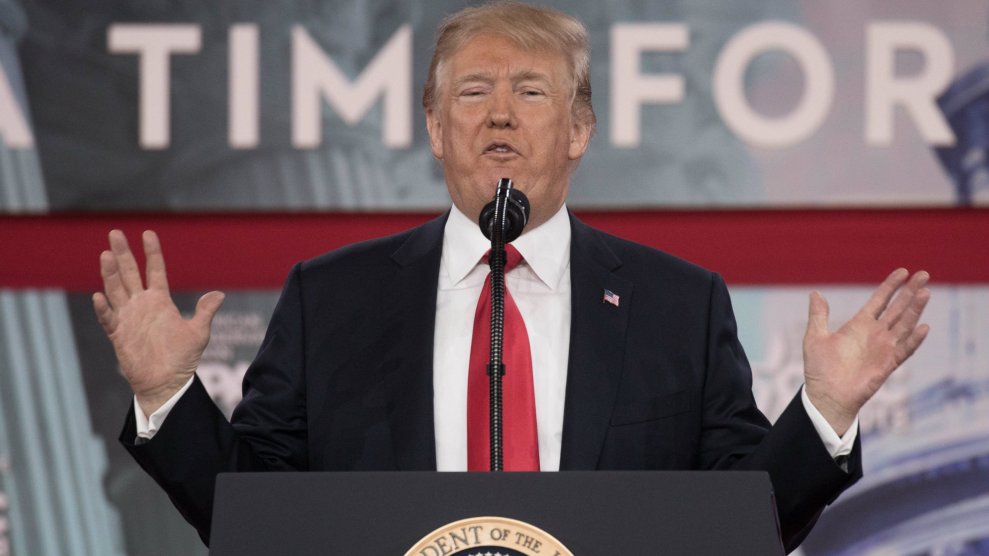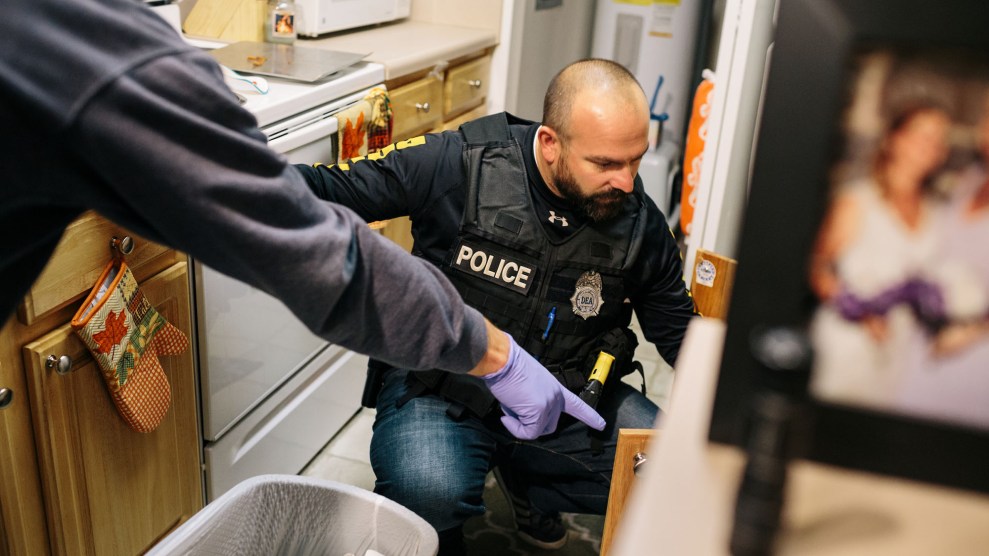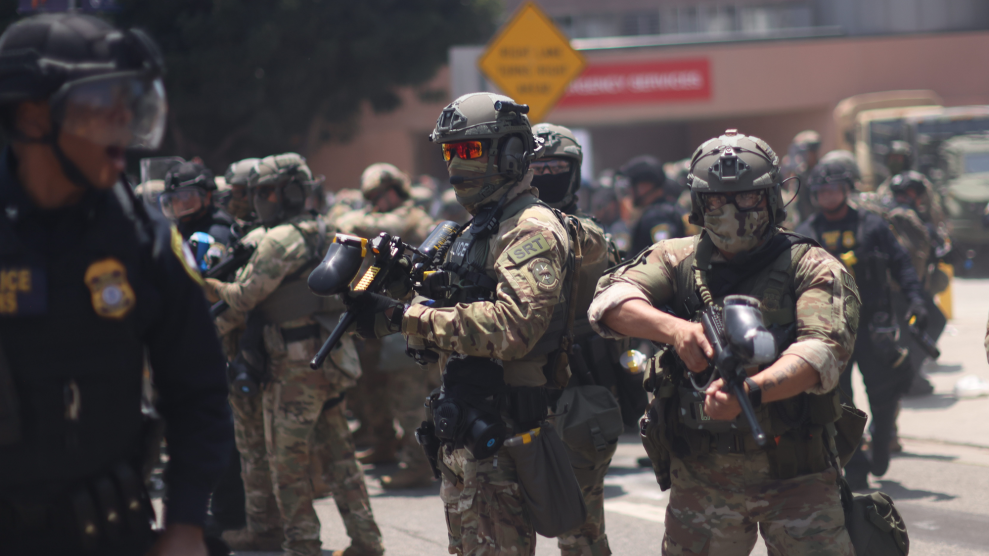
President Trump speaks about his plan to address the opioid epidemic at New Hampshire's Manchester Community CollegeElise Amendola/AP
On Monday, President Donald Trump unveiled his latest plan to address the opioid epidemic, once again suggesting the death penalty for drug dealers.
“We can have all the blue ribbon committees we want, but if we don’t get tough on the drug dealers, we’re wasting our time,” he said at a New Hampshire event to announce the White House’s Initiative to Stop Opioid Abuse. “Just remember that: We’re wasting our time. And that toughness includes the death penalty.”
Though the plan includes initiatives to increase access to treatment and reduce the flow of drugs, Trump’s speech focused on cracking down on drug dealers. As he said, “I love tough guys—we need tough guys.” But the president’s initiative overlooks the glaring reality that drug dealers and drug users are often the same people, selling drugs to feed their own addictions. “I think it reflects a lack of a broader understanding of the factors in this crisis,” said Sen. Maggie Hassan (D-N.H.) in a statement. “Law enforcement have been the first people to tell us we can’t enforce our way out of this.”
“To say this is like a 1980s drug war speech is a disservice to the 1980s,” adds Keith Humphreys, a Stanford psychiatry professor and former drug policy advisor to the Bush and Obama administrations. “Its all the same rhetoric except the racial stuff was much more coded back then.”
Here are other proposals from Trump:
- Pursue “major litigation” against pharmaceutical companies: “Some states are already bringing it, but we are thinking about bringing it at a very high federal level,” Trump explained. This follows Attorney General Jeff Sessions’ pledge last month to “hold accountable those whose illegality has cost us billions of taxpayer dollars.”
- Launch drug prevention ads: Trump proposed “spending a lot of money on great commercials” showing the dangers of drugs. “We’ll make them very, very bad commercials. We’ll make them pretty unsavory situations.” He also announced a public education campaign CrisisNextDoor.gov, where Americans can share their stories of addiction and overdose. (So far, the site includes videos with baseball’s Darryl Strawberry and former Fox commentator Eric Bolling.)
- Secure the southern border: “Eventually the Democrats will agree with us and we’ll build a wall to keep the damned drugs out,” Trump said, to chants of “Build that wall.” Most heroin comes from Mexico, but the majority of fentanyl and its analogues—the particularly powerful drugs killing more Americans than any other opioid—come from China.
- Crack down on sanctuary cities: “Ending sanctuary cities is crucial to stopping the drug addiction crisis,” he said, fueling the allegation popular among some Republicans that sanctuary cities drive the epidemic by housing gangs and drug dealers. “These are bad, bad people,” Trump added, referencing MS-13 members. “They don’t use guns. They’d rather use knives because it’s more painful.”
- Seek tougher penalties for dealers: The Department of Justice will seek “much tougher penalties than we’ve ever had,” said Trump. Sessions followed the president’s speech with a prepared statement: “We will continue to aggressively prosecute drug traffickers and we will use federal law to seek the death penalty wherever appropriate.” Last spring, Sessions instructed federal prosecutors to prosecute even low-level drug offenders with the most severe charges possible in order to trigger mandatory minimum sentences. Studies have repeatedly shown that tougher drug enforcement doesn’t reduce access to illegal drugs or substance abuse. Making matters more complicated is that dealers often don’t know what they’re dealing, since fentanyl is often mixed with other additives and fillers into the heroin supply.
- Cut opioid prescriptions by one third over three years: Trump didn’t include details on how the administration will accomplish this goal, but it’s an ambitious one by any measure: Opioid prescription rates have been slowly dropping since peaking in 2010, but as of 2015, they were still three times what they were in 1999. Trump’s plan also calls for 75 percent of opioid prescriptions reimbursed by federal healthcare programs to be issued according to best practices within three years.
- Expand access to naloxone: Trump proposed increasing the availability of the overdose reversal drug naloxone, including ensuring all first responders have access to it.
- Help enable Medicaid to pay for residential treatment: Trump called to repeal a rule that prohibits Medicaid from paying for residential addiction treatment facilities with more than 16 beds. The rule, known as the “IMD exclusion” (short for institutions for mental disease), draws its origins from efforts half a century ago aimed at deterring mass institutionalization of those with mental illness. Drug policy experts on both sides of the aisle have long lobbied to overturn the rule, saying that it dramatically hinders access to opioid addiction treatment. Under the current law, states can already apply for a waiver to the rule.
Critics say that the plan is yet another example of the president talking a big game when it comes to opioids but not following up with action. Trump did not call for more funding for the epidemic even though paying for the plans’ provisions would likely far exceed the $6 billion the administration budgeted to address the epidemic over the next two years. “Policy without budget is just hot air,” Humphreys said. While Trump has repeatedly promised to address the epidemic, his actions suggest otherwise: His budget requests have included cuts to the Centers for Disease Control and Prevention, the National Institutes of Health, Medicaid, and the Office of National Drug Control Policy.
Still, Trump assured the audience he was prioritizing the issue. “I don’t want to leave at the end of seven years and have this problem,” Trump said. “We’re gonna solve it with brains, we’re gonna solve it with resolve, we’re gonna solve with toughness. Toughness is the thing that they most fear.”

















